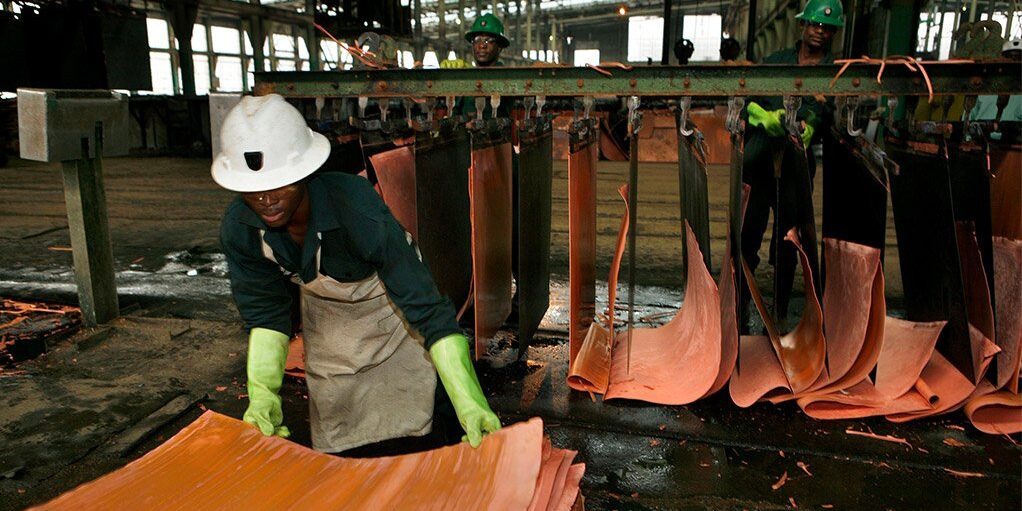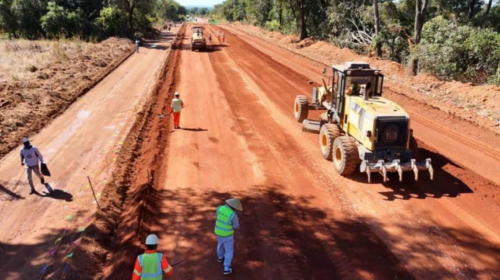Copper becoming increasingly important as electric vehicle industry grows
Commodities like copper are becoming increasingly important as the electric vehicle industry grows. Karan Rathi, board director of mining company Chillerton Group, speaks about the copper industry in Zambia and how the Covid-19 pandemic has heightened investor support for projects and communities.
Zambia, after the Democratic Republic of Congo, is Africa’s second-largest copper producer, but it isn’t well-known. Given the expectation that the industry will boom as more widespread electric vehicle (EV) production ramps up, the copper opportunities in countries like Zambia will become increasingly important.
An upstream and downstream mining company, in 2000, Chillerton Group was awarded four large mining licenses covering sites in the Zambian Copperbelt. It also entered into a historic development agreement with the Government of the Republic of Zambia.
The mining concessions under development boast some of Africa’s largest proven copper and cobalt deposits. We spoke to the company to find out about the state of the copper industry in Zambia and what the future might hold for the sector.
What does the copper industry currently look like in Zambia?
Karan Rathi (KR): The Zambian copper industry has been consistently showing good signs of growth, especially in the development of infrastructure to support the sector, despite years of depressed copper prices.
As the largest free market producer on the continent, Zambia is a fantastic place to conduct business. With copper prices now trading at eight year highs, producers are starting to look to replenish their resource inventories. Copper will continue to play a pivotal role in the country’s fortunes over the next decade. Thus, we have been extremely bullish on securing copper assets. Chillerton firmly believes the industry can lead the country to brighter days and prove an attractive destination for investors. I presently expect to be one of only a few mining companies capitalising on a copper powerhouse.
What potential does the sector hold for the global mining industry, particularly given the expected uptake of renewable technology such as EV’s?
KR: The demand for copper is growing. Estimates are that in two decades consumption will be up by 50%. The World Bank notes that the drive towards a low-carbon future could mean copper, along with other precious metals, could see 10-fold consumption increases by 2050.
It’s this historic shift in consumer behaviour that will ensure deep resilience within the market. The meteoric rise of Tesla, followed by an arms race amongst the giant car manufacturers towards the total electrification of their product lines, ensures that demand will continue to remain strong and consistent.
Of course, the transition towards green energy goes beyond futuristic-looking cars on our roads. According to McKinsey, 73% of global power generation will come from renewable energy sources by 2050. With an average of six tonnes of copper in every wind turbine, we are seeing clear industrial uses, backed by major public-private projects. The transition to more sustainable forms of energy will be built on a foundation of copper, the demand for which is rising quickly as more and more countries are adopting policies targeted at achieving a net-zero economy by the middle of this century.
Tell me about your company – what kinds of projects are you involved in? How have you seen the copper industry in Zambia change in your time working within it?
KR: Our projects lie in the heart of the Katanga basin, adjacent to the Konkola Copper Mine, boasting a phenomenal size of copper and cobalt resource. The project has all the required infrastructure – rail, road, power, and water – to accelerate a robust development programme.
We have developed our resource base with a view to developing the asset in a carbon-neutral, sustainable fashion. Currently we are bringing our low-cost tailings project into production and have ongoing development plans for a larger open pit and underground mine. We are looking to ramp up production to around 50,000 tonnes per annum by 2024.
We are currently working on a resource digitalisation pilot, this will be key to our evolution. Although at an early stage, we remain confident that technology diversification will bring much-needed change to the mining sector that many of us have eagerly anticipated.
How have the impacts of Covid-19 been managed in the industry?
KR: The impact of the coronavirus pandemic on the mining sector has been like many other industries. However, the resilience shown by companies and operators should be applauded. Running sites with social distancing measures is not straightforward. Fortunately, most mines have fared well, sparing themselves from the demise of Covid-19 outbreaks.
Certainly, the industry is no stranger to health epidemics and that experience has demonstrated its value. The industry should be proud of how it implemented social distancing, PPE, and rapid testing to great effect. It has also proved how ingrained support between private operators and surrounding communities is vital in a time of crisis.
In Zambia, the industry adapted swiftly by implementing the right measures to ensure safety of employees and other stakeholders.
What is needed to allow Zambia’s copper industry to grow?
KR: The demand for Zambia copper is clear. There aren’t many places in the world where you can find large world-class assets in stable jurisdictions. But to meet that demand, there is a need for more end-to-end investment, more exploration, and more local, sustainable mining sites. This requires extra vision and bravery from investors.
I also believe that the Zambian copper industry needs to strive to vertically integrate upwards, i.e. value addition and start looking to manufacture copper/cobalt products in-country. This would reduce the industry’s carbon footprint and provide significant social and economic benefits.
What is currently standing in the way of the industry’s rise?
KR: As I have mentioned, there is so much untapped potential in Zambia’s copper industry as the country still remains largely unexplored. But none of this will be achieved if we have operators and investors that see Zambia’s future as exclusive to their own fortunes.
The Covid-19 crisis may also push the industry to rethink its supply chain and bring copper manufacturers closer to the mining houses. This would have a huge impact on the copper supply chain and inevitably the carbon footprint of the industry. Transparency needs to increase across the board and monopolisation by certain countries will have its own issues.
One of the positive outcomes of the recent pandemic has been the acceleration of ESG, the increased pressure by both retail and institutional investors for companies to behave in the right way. And so, it is in Zambia. Companies like my own have clear and accountable targets towards carbon neutrality. We understand how technology can play a role in boosting productivity and believe that ESG is not only nice to have, but central to the purpose of any successful business, especially in the mining sector.
![]()





